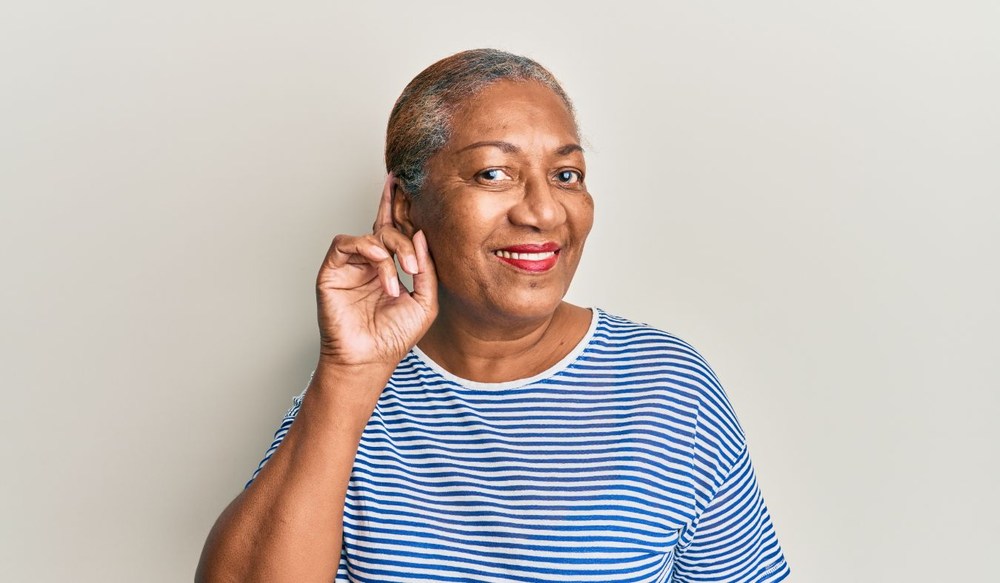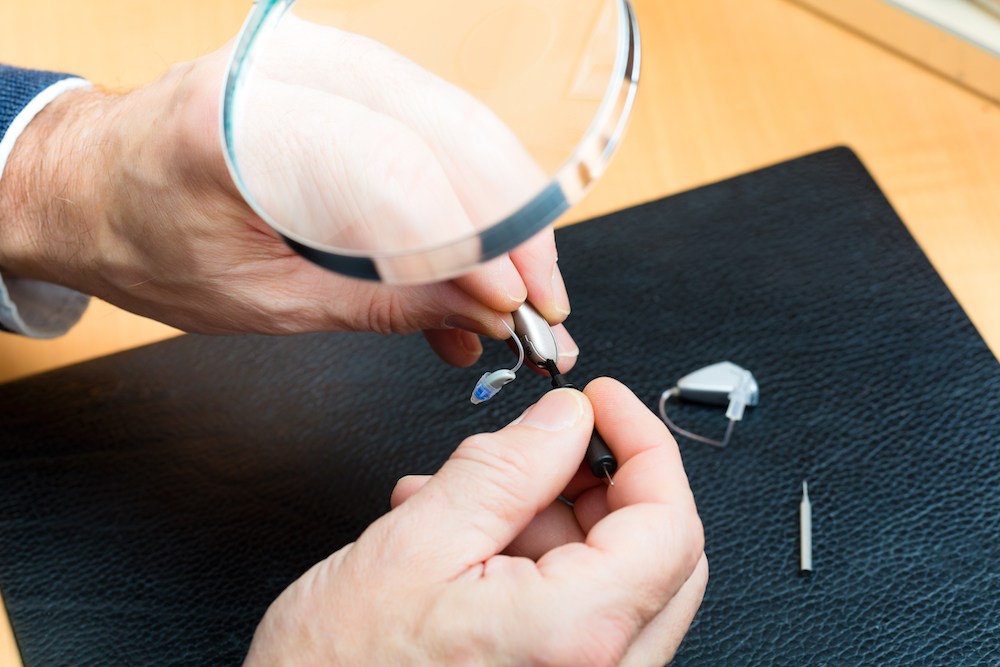The Future of Hearing Aid Personalization
Hearing aid technology is moving toward treating each person’s

By: admin | September 24, 2025
Children with hearing loss face obstacles that adults simply don’t encounter. Their ears are still growing, which means any hearing device needs to accommodate constant physical changes. Kids also can’t always explain what they’re experiencing with their hearing, making it harder for parents and doctors to understand the problem fully. Add to that the fact that children need to hear clearly during crucial years when they’re learning language, developing social skills and building academic foundations. What works for an adult who loses hearing later in life often falls short for a child whose hearing challenges affect their entire developmental process.
The pediatric hearing field has responded to these unique challenges with solutions designed specifically for growing children rather than simply smaller versions of adult devices. Modern approaches consider everything from the durability needed for playground activities to the flexibility required as a child’s ear canal changes shape. Technology has become more adaptable, treatment methods more child-friendly and outcomes significantly better than what was available even a decade ago.
Early hearing support is important because children learn language and communication skills quickly in their first few years. When hearing loss is found and addressed early, children have a better chance to keep up with their peers at home, school and during play. This support helps build strong foundations for learning and social growth.
One difficulty many families face is that hearing loss can go unnoticed at first. Signs may be mistaken for other issues, such as speech delays or trouble paying attention. Regular check-ups and early testing help catch problems before they affect language development.
When children receive help early, they can start using new hearing technology right away. Modern devices are designed to fit into a child’s daily life, making it easier to join conversations and classroom activities. This gives children more confidence as they learn new things every day.
Hearing loss can have a significant impact on how children learn to speak and understand language. When a child cannot hear certain sounds clearly, it may be difficult to imitate words correctly or pick up the nuances of speech. This can make following conversations or learning new vocabulary more challenging, which sometimes leads to delays in speaking or forming sentences. Even subtle hearing difficulties can affect a child’s ability to recognize sounds in words, making it harder to pronounce them accurately or understand instructions in school or at home.
Fortunately, modern hearing solutions can make a meaningful difference in supporting speech and language development. Devices that amplify sounds or focus on speech can help children hear the full range of sounds they need to learn language effectively. Combined with speech therapy and consistent practice at home and school, these tools help children develop stronger communication skills, gain confidence in expressing themselves and participate more fully in everyday interactions. With early support and the right strategies, children with hearing loss can keep pace with their peers and thrive both academically and socially.
Pediatric hearing solutions are designed with the needs of growing children in mind. They are typically smaller, lighter and softer than adult devices to ensure comfort and proper fit for developing ears. Many come with features like tamper-proof battery doors, moisture-resistant components and durable materials that can withstand active play, school activities and everyday movement. Colorful designs and fun accessories can also make wearing a hearing device feel more appealing to children, helping them feel confident and enthusiastic about using it consistently.
In contrast, adult hearing solutions often focus on discreet design, advanced sound processing and connectivity features for smartphones, TVs and other devices. While comfort is still important, adult devices usually prioritize handling complex listening environments, like busy restaurants or large meetings. Pediatric devices may also include specialized programming to support speech and language development, ensuring children hear the full range of sounds needed to learn and communicate effectively.
Digital technology is changing how children with hearing loss experience sound. These updates help young listeners hear more clearly in busy places like classrooms or playgrounds. Some of the latest features include:
Wireless features in pediatric hearing aids help children connect with the world around them in simple ways. Devices can link directly to classroom microphones, smartphones and tablets, making it easier for children to hear teachers or family members during calls and lessons.
With wireless streaming, children can listen to music or educational videos without extra cords or equipment. These advancements help make daily activities smoother and support learning both at home and at school.
Noise control tools are important for helping children with hearing loss in busy school environments. These tools can include classroom sound systems, special microphones and noise-reducing materials.
Some classrooms use sound field systems that spread the teacher’s voice evenly so every student can hear clearly. Other solutions, like personal remote microphones, send the teacher’s voice directly to a child’s hearing aids.
Manufacturers use data from real classrooms to make these tools more effective for children. The specialist keeps up with these improvements so you can benefit from the latest options that support learning and focus at school. With these advancements, students have a better chance to participate fully in class activities and group discussions.
Rechargeable batteries are a helpful feature in today’s pediatric hearing aids, especially for children with busy schedules. These batteries last all day and can be charged overnight, so there is less worry about running out of power during school or play.
Manufacturers use new data to make rechargeable systems more reliable and easier for families to use. This means fewer battery changes, less waste and more time for children to focus on learning and having fun.
Custom hearing devices for children are designed to adjust as your child grows. These devices can be refitted or resized so they continue to fit comfortably and work well as your child’s ears change shape over time.
Manufacturers use data about children’s growth patterns to improve how these devices are made. This helps the audiologist offer solutions that keep up with your child’s needs, supporting clear hearing through every stage of development. Custom options give families peace of mind, knowing the device will stay comfortable and effective as children get older.
Remote adjustments have made it much easier for your audiologist to support children with hearing aids, even when families can’t make it to the clinic in person. Using secure online connections, the audiologist can make small but important changes to your child’s device settings, like adjusting volume, fine-tuning sound clarity or modifying programs for different listening environments. This means your child can continue to hear clearly at home, at school or during extracurricular activities without the stress of an in-person appointment.
The convenience of remote adjustments also allows for quicker responses to day-to-day challenges. If your child is struggling to hear in a noisy classroom or finds a particular sound uncomfortable, the audiologist can make timely adjustments to improve their listening experience.
Child-focused designs in pediatric hearing aids use bright colors, fun patterns and comfortable shapes to help children feel good about wearing their devices every day. These features can make hearing aids less noticeable or even something children are proud to show their friends.
Some benefits include better acceptance by children, easier identification for parents and teachers, and improved comfort. There may be fewer style choices as children grow older or a need for updates as tastes change.
Water-resistant hearing devices are built for children who enjoy sports and active play. These devices can handle sweat, splashes and light rain without losing performance. Children can join in on physical activities without worrying about their hearing aids getting damaged.
Manufacturers use data from real-life situations to make these devices more durable for busy kids. Features like sealed battery doors and moisture-resistant materials help protect the device during outdoor games or swimming lessons. Choosing water resistant options encourages children to stay active while still supporting their hearing needs.
Many parents want to make sure their child is using hearing devices safely and effectively. Modern pediatric hearing aids now offer parental controls and monitoring tools that help families keep track of device usage. These features can include:
Helping your child get used to new hearing devices can take time and patience. Children may feel unsure or nervous at first, but there are simple ways to make the process easier.
Try these practical strategies:
Supporting a child with hearing loss is about more than providing the right device. It’s about creating an environment where they can learn, communicate and participate fully alongside their peers. Solutions designed specifically for children address both the practical and developmental needs of young ears, ensuring devices are comfortable, durable and effective as kids grow. Combining technology with guidance, encouragement and ongoing adjustments helps children gain confidence in their hearing and feel more at ease in everyday interactions.
If your child is experiencing hearing challenges, getting personalized support early can make a meaningful difference. Contact HEARINC in Ohio by calling the Akron office at (330) 752-6763 or the North Canton office at (234) 356-3071 to explore options tailored to your child’s needs. With the right support, children can participate in school, social activities and daily life with clearer hearing and more ease in communication.

Hearing aid technology is moving toward treating each person’s
By: admin | November 18, 2025

Children with hearing loss face obstacles that adults simply don’t
By: admin | September 24, 2025

When you lead an active life, your hearing aids need to keep up with you.
By: admin | May 23, 2025
